
My morning view


Before I left, one of the scout leaders took the time to share some thoughts with me. He wasn't preachy or judgmental in any way. It felt genuinely caring. And to me, when someone is sincere and authentic, I will honor them with the respect of openly listening to them.

Not to mention, his insights in his personal inscription in the book were probably more accurate than any therapist could have done! I can't quite pinpoint what I'm looking for, but that restlessness has been a part of my life (and personality) for a very, very long time.
Just next to Goblin Valley State Park is the San Rafael Swell. The 75 mile long by 40 mile wide geologic feature consists of a giant dome-shaped anticline that was pushed up 60 - 40 million years ago. Since then, infrequent but powerful flash floods have carved numerous canyons, gorges, mesas and buttes.

An anticline is a fold that is convex up and has its oldest beds at its core. Think of a stack of blankets draped over a box. If the ages of the rock layers are unknown, then the general term of 'antiform' should be used (any fold whose form is convex upward). Click for a larger view

The San Rafael Swell covers 2,900 square miles.

The fold is much steeper on the eastern edge, which is called the San Rafael Reef. It is criss-crossed with steep slot canyons.
There were numerous slot canyons to chose from... Ding &Dang Canyons, Chute Canyon, Crack Canyon... but ended up selecting Little Wild Horse and Bell Canyons. They seemed the easiest and least technical.


My plan was to go up Little Wild Horse, catch the Behind The Reef Road for 1.6 miles, and follow Bell Canyon back down.
Click for a larger view
I had checked with the visitor center the day before regarding the weather. It had looked good. Hiking slot canyons can be a dangerous business and you want to make sure you have good weather. There may not be a storm in sight near the canyon, but flash flooding can still occur from intense rainfall from thunderstorms upstream. Rain is not absorbed by this slick rock but rather travels on the path of least resistance... through these narrow canyons.

An example of a flash flood (before and during)

A canyon can be impassible after a flood.
And so I set out for the trailhead. To the left of me were the rock formations that surrounded of Goblin Valley and to the right was the San Rafael Reef.



The Reef

The Pronghorn is the only surviving member of the family Antilocapridae and is found nowhere else in the world. While often called the Pronghorn Antelope, it is not a true antelope. It is a unique animal with no close relatives. It is the fastest land mammal in North America (up to 60 mph), and the second fastest in the world (second only to the cheetah).
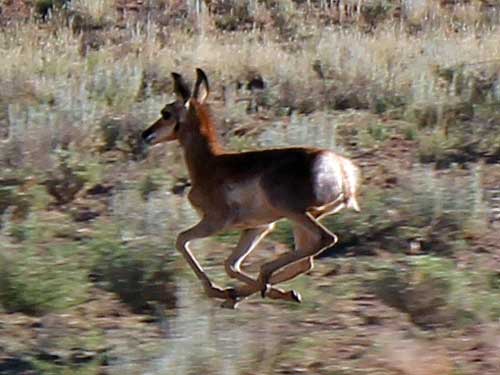
Baby pronghorns can walk in less than an hour after being born, and can outrun a person when four days old.

All pronghorn have black horn sheaths, but those of the males are larger with side prongs. Horn sheaths are different from both deer antlers and true cow horns. Antlers are made of bone and shed annually; true horns are made of compressed hair and never shed. Horn sheaths are a bit of both... made of keratin growing on a bony core and shed annually.
I arrived at the trailhead, signed in, and started on my way.

Logs like these are just extra safety measures for hikers and campers.

Heading towards the reef



Within a short time, I reached what looked to be the start of the slot canyon. I entered it happily and excitedly... until about 30 feet later when the entire thing was blocked off. I tried to climb over the rocks but they were simply too big. Dejectedly, I walked back to the canyon entrance. I then noticed that I could go up one of the sides. So I did and eventually found a place to climb back down into the canyon on the other side of the blockage. Yes, I had just outsmarted... a rock.

The canyon entrance. I eventually came back out and went along the left ledge.

Getting deeper into the canyon...

... until the end of the line.
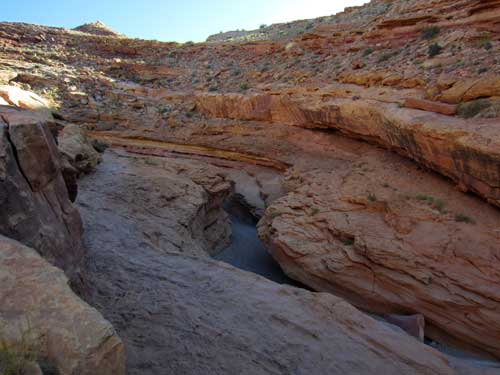
Walking along the upper ledge

Eventually down in the canyon
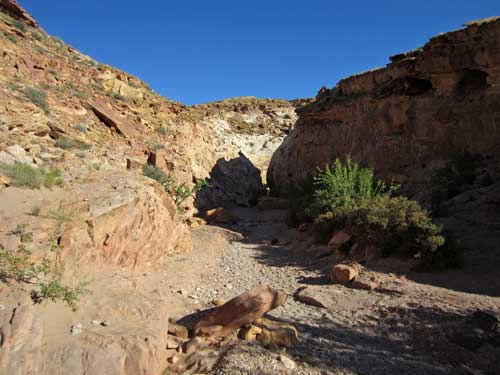


A sleepy looking Side-blotched Lizard

Following the slowly narrowing canyon

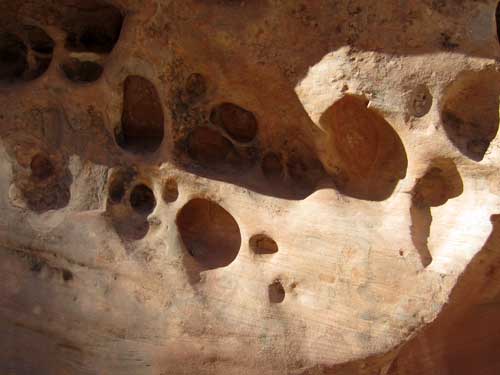
The entertaining shapes...

... and textures of the rocks
The canyon started to narrow and close in.

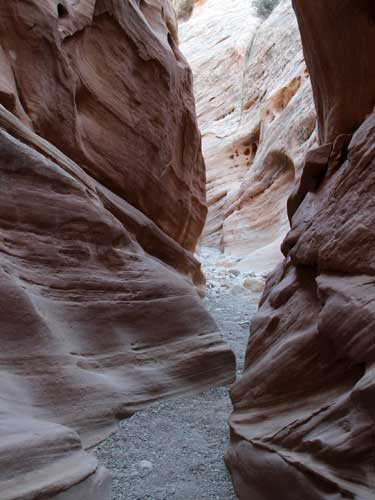


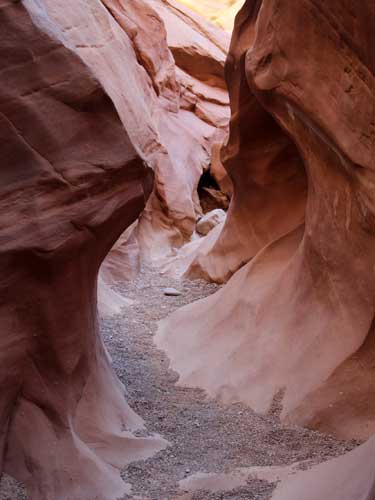

It opened up briefly, then closed back down again.

Emerging from the first slot canyon



Entering the next narrow section


return • continue